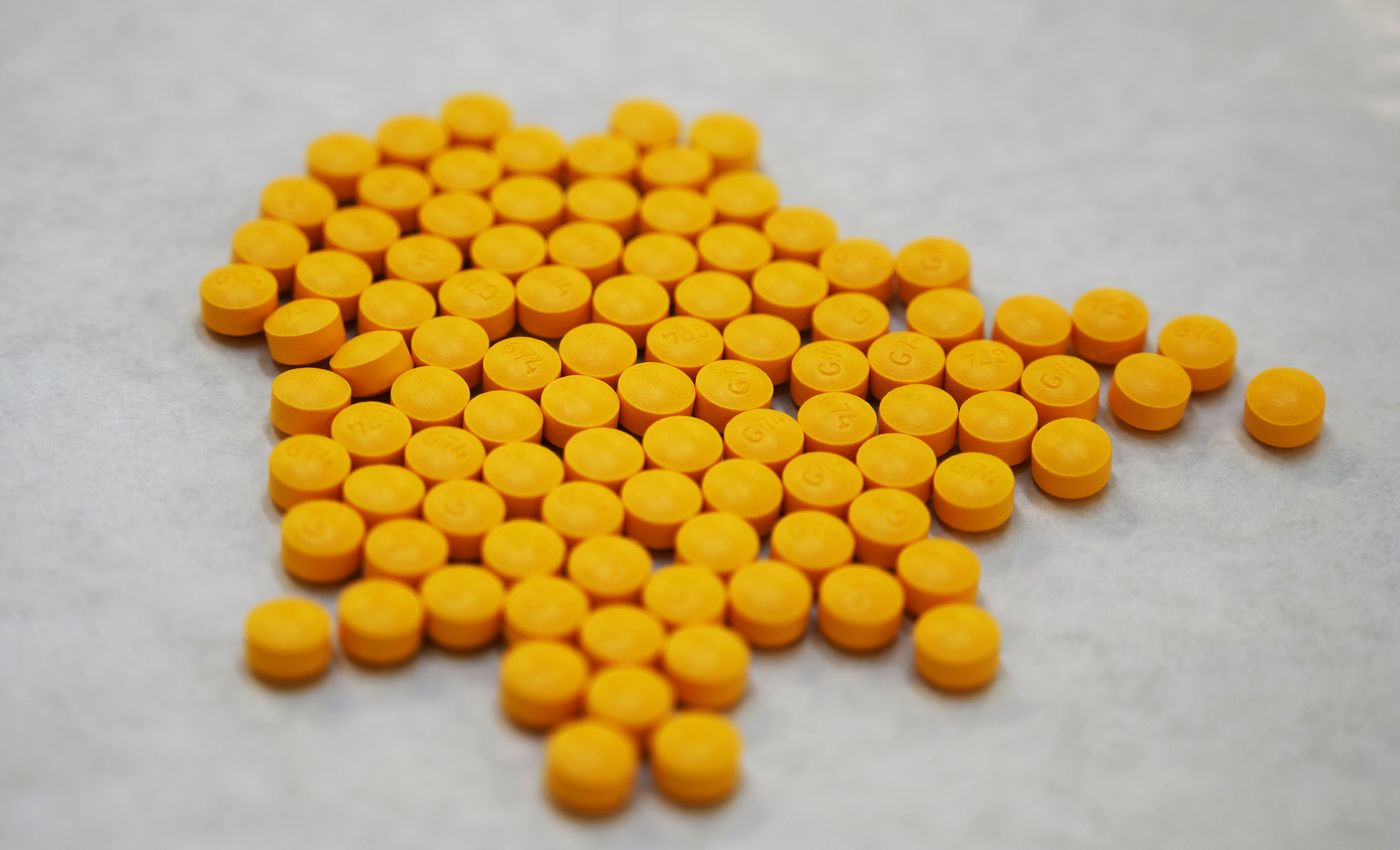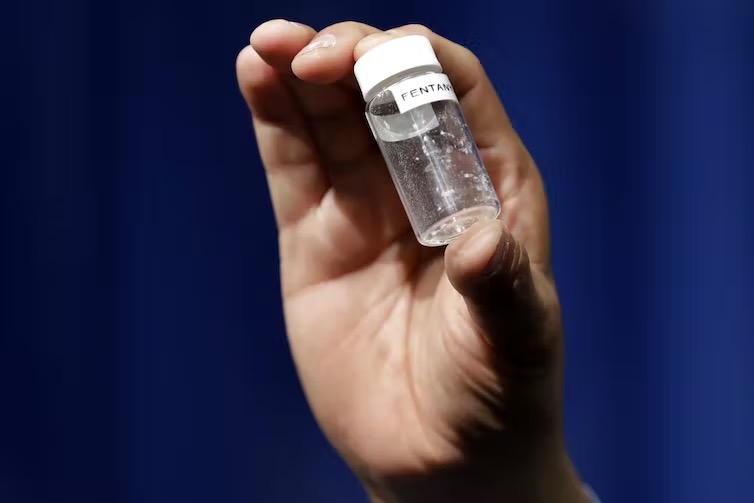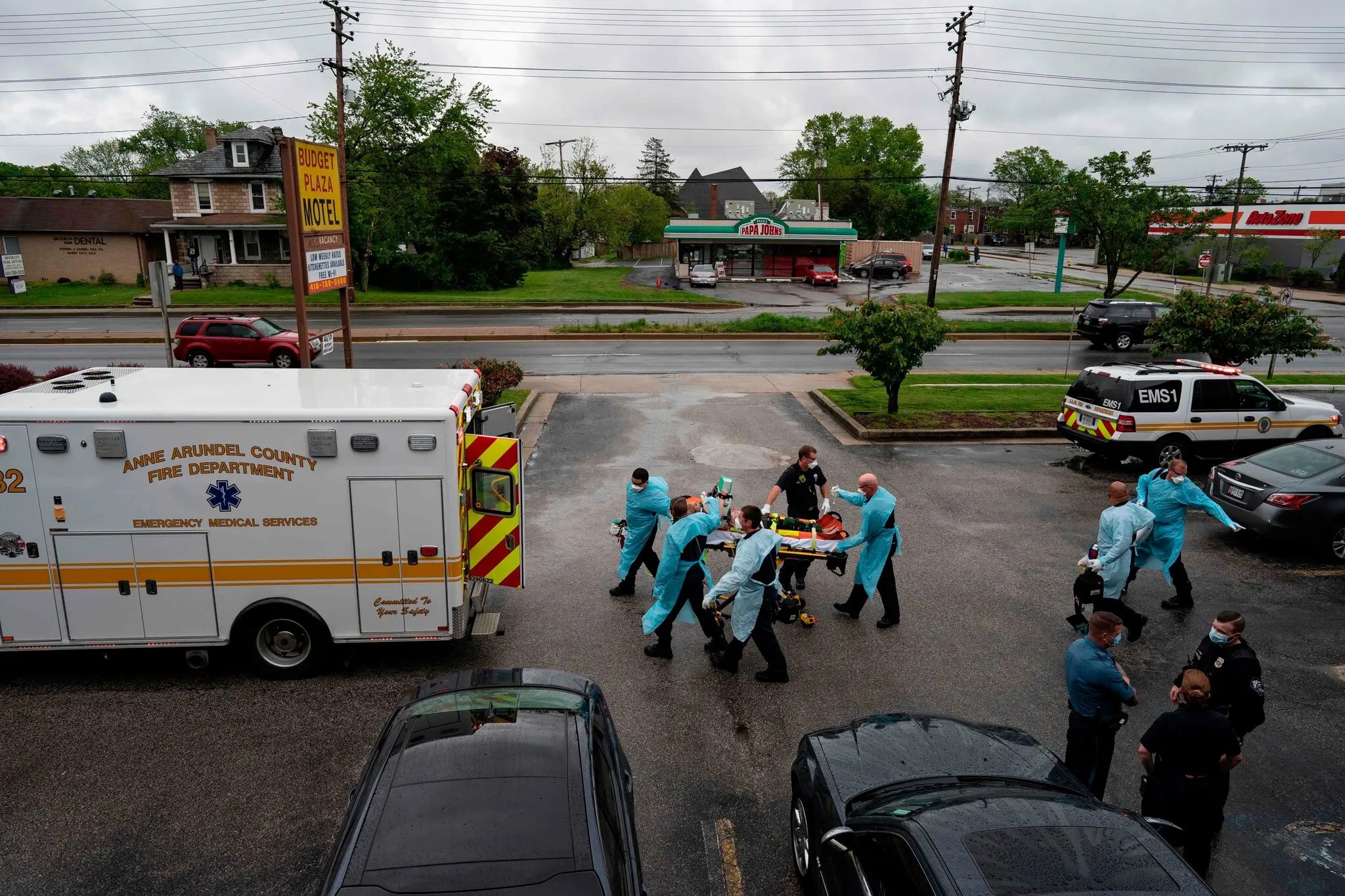In the past few years, the U.S. has been facing a drug overdose crisis of unprecedented proportions.
In October 2022, the number of reported drug overdose deaths in a 12-month period was 101,751, according to the latest data of provisional counts for drug overdose deaths from the Centers for Disease Control and Prevention (CDC).
Although the number is fewer than the record high reached in March 2022, which stands at 108,450, it's still more than 47 percent higher year on year compared to three years ago when the number was 69,371. Overdose remains a leading cause of injury-related deaths in the U.S.
Behind the deadly surge in U.S. drug overdoses lies opioids, a drug class that includes prescription painkillers such as oxycodone and fentanyl, as well as illegal drugs like heroin.
As they are highly addictive, people who become addicted to opioids often turn to cheaper and more dangerous drugs.

Tablets believed to be laced with fentanyl that were confiscated by the U.S. Drug Enforcement Administration. /AFP
Tablets believed to be laced with fentanyl that were confiscated by the U.S. Drug Enforcement Administration. /AFP
Fentanyl, a type of synthetic opioid, accounts for over 82 percent of all opioid-related overdose deaths.
Pharmaceutical fentanyl is developed as a painkiller for surgery. It is similar to morphine but is 50 to 100 times more potent.
However, illegally made fentanyl is sold through illicit drug markets for its heroin-like effect, which is often mixed with heroin or other drugs like cocaine, or pressed into counterfeit pills.
Unfortunately, people with fentanyl addiction are facing deadly risks due to the strong potency of fentanyl. Just two milligrams of fentanyl, about the same weight as a mosquito, is lethal.
"I was considered dead for 10 minutes. The emergency medical technicians had to come in and narcaned me, hit me with the (Automated External Defibrillator, or AED) machine," said Jeffery, a recovering addict.
During a group session at St. John of God Health Care Services, an accredited substance addiction treatment center in Victorville, California, Jeffery recounted his harrowing brush with death from a fentanyl overdose.
"It's no way to live. That's for sure. It takes all your hopes and your dreams."

Only a small amount of fentanyl is enough to be lethal. Photo taken on May 6, 2022. /AP
Only a small amount of fentanyl is enough to be lethal. Photo taken on May 6, 2022. /AP
"As an emergency physician, I give fentanyl as an analgesic, or painkiller, to relieve severe pain in an acute care setting," wrote Kavita Babu, Professor of Emergency Medicine, University of Massachusetts Amherst's Chan Medical School in The Conversation, a publisher of research-based news and analysis.
While hospitals offer fentanyl under limited circumstances, there is still a risk of dangerously low breathing rates for patients. In non-medical settings, those taking fentanyl lack access to medical staff capable of monitoring their breathing rate in real time, she wrote.
Teen drug overdose
Drug overdose was previously viewed as primarily impacting adults. However, in the past few years, the fastest-growing population dying from drug overdose is teenagers.
Melanie Ramos, a 15-year-old girl, died at a high school campus after taking a counterfeit pill laced with fentanyl. She and her friend thought they were taking Percocet, a pain medication that is sometimes abused.
Melanie's death is just one example of how drug overdose is impacting teenagers across the country.
The rate of overdose deaths among U.S. teenagers rose by a staggering 94 percent from 2019 to 2020. And in the first half of 2021, teen overdose death rose by another 20 percent, according to research from the University of California, Los Angeles (UCLA).
The increases are almost entirely due to illicit fentanyl, which is increasingly found in counterfeit pills, the study suggests.
Although adolescent drug use rates remained around 30 percent between 2010 and 2020, it did not help flatten the death rate.
This is really about drug use becoming more dangerous, not more common, according to Joseph Friedman, addiction researcher at the David Geffen School of Medicine at UCLA.

Students and community members place flowers and candles at Helen Bernstein High School where a teenage girl died of an overdose, Los Angeles, the U.S., September 15, 2022. /Jason Armond/Los Angeles Times via AP
Students and community members place flowers and candles at Helen Bernstein High School where a teenage girl died of an overdose, Los Angeles, the U.S., September 15, 2022. /Jason Armond/Los Angeles Times via AP
Fentanyl-laced Adderall is also passed off as medications. Previously used for treating Attention Deficit Hyperactivity Disorder (ADHD) and narcolepsy, it is now widely used among college students who believe it helps them focus when staying up. However, it can cause a stroke or a heart attack.
A 2022 study from Ohio University shows that nearly 63 percent of students first started using stimulants like Adderall for non-medical reasons in college, while nearly 30 percent in high school. Over 23 percent of college students said they use a stimulant at least once an academic term.
Behind drug overdoses problem
The causes of drug overdose are multifaceted. One of the main causes is the widespread use of prescription opioids.
For years, doctors prescribed these drugs to patients suffering from chronic pain, despite serious risks and a lack of evidence of their long-term effectiveness.
Over time, many patients became addicted and turned to illegal drugs like heroin when their prescriptions ran out, resulting in a wave of opioid-related deaths that affected communities across the country.
"It goes back to the pharmaceuticals and how they play a very big role in how people have systematically become addicted to opioids," said Nia Castleman, an administrator at St. John of God Health Care Services during the group session.
"This started way back in the 1990s when pharmaceuticals were pushing painkillers such as Oxycodone to treat pain," she said, adding that what doctors failed to do was talk about their addictive properties.

Firefighters and paramedics with Anne Arundel County Fire Department transport a patient after responding to a call for a cardiac arrest as a result of a drug overdose in Brooklyn, New York, the U.S., May 6, 2020. Alex Edelman/AFP via Getty Images
Firefighters and paramedics with Anne Arundel County Fire Department transport a patient after responding to a call for a cardiac arrest as a result of a drug overdose in Brooklyn, New York, the U.S., May 6, 2020. Alex Edelman/AFP via Getty Images
Another factor that fuels the crisis is smuggling.
Fentanyl is both sold alone or used as an adulterant due to its high potency, allowing dealers to traffic smaller quantities while maintaining the expected drug effects for buyers.
Manufacturers may also add bulking agents, like flour or baking soda, into fentanyl to increase supply without adding costs. It is more profitable to dilute a kilogram of fentanyl than a kilogram of heroin.
The surge is also due to social determinants like poverty, homelessness and mental health problems, said Castleman, noting that all of those factors play a big role in the surge of opioid addiction.
Stigma is also a big challenge in addressing the overdose problem. Many people still view addiction as a moral failing rather than a medical condition that requires long-term treatment.
Such stigma can negatively affect people from seeking help. In most cases, they choose not to seek treatment for fear of being arrested or prosecuted.
In response to the crisis, states and the federal government have taken steps to crack down on over-prescription and increase access to addiction treatment, such as increasing access to overdose prevention medications.
However, progress has been slow, and many continue to struggle with addiction and overdose.
Watch videos:
Finding True America: Smart drug in U.S. colleges
Finding True America: How do U.S. students view abuse of prescription drugs on campuses?